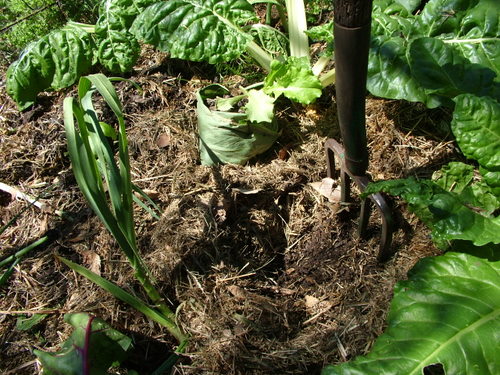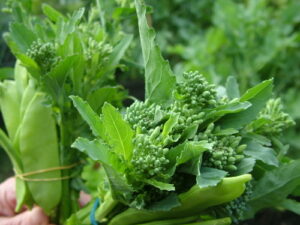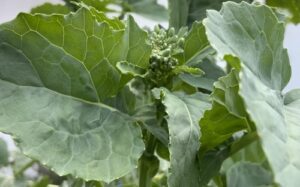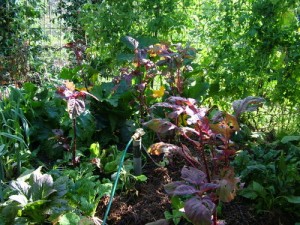There is a reason that Greek salads have no lettuce. Greece has a Mediterranean climate – cool wet winters and hot dry summers, and lettuce and hot dry summers don’t mix.
Our summers here in Northern NSW are usually wetter, but the rain comes in thunderstorms. Any lettuce seeds I plant now will be coming to maturity in 8 to 12 weeks, in December and January. They can expect to need to endure days of frizzle weather when even if I water heavily in the morning, by midday anything with big green leaves will be wilting.
This leafy planting break, I shall whack in a few seeds of very heat tolerant, bolt resistant varieties – wild rocket (aragula – more bolt resistant than regular rocket), cos, brown romaine, and royal oak leaf lettuces, and maybe a few more of a new lettuce variety I am trying this year called 2 Star from Southern Harvest seeds. But I shall only plant out a couple of each and they are long shots. I won’t expect too much of them, a few weeks of harvest if I am lucky. In December and January I will be making Greek salads and tabouli, not salads based on lettuce. The only other leafies I am planting are another round of all the basils.
I shall plant the seeds in seed raising mix in the shadehouse, and pot on the seedlings into a rich mix of compost and creek sand. I shall keep them well watered and protected in part shade in the shadehouse until they are well advanced, then plant them out into a deeply mulched spot with minimal disturbance to the roots. In midwinter you might get away with buying a punnet of lettuce seedlings and tearing the roots apart, but from now on, all that is likely to happen is that they go bitter and bolt to seed.
I am also planting out the advanced seedlings planted last month. The picture is a 2 Star Lettuce, supposed to be heat and bolt resistant. I also have some cos, romaine, and mignonette to plant out, and basils and aragula. I shall make a hollow in the mulch and dig a little hole just big enough to put the seedling in, leaf tube and all, causing minimal disturbance to the roots.
They may all come to nothing. A couple of days over 40 degrees C, which sometimes happen, and only the basil will still be worth harvesting. But that mixture of staples and long shots is the basic design nature adopts for most ecosystems, and it’s not a bad model for maximising variety and minimising risk.



